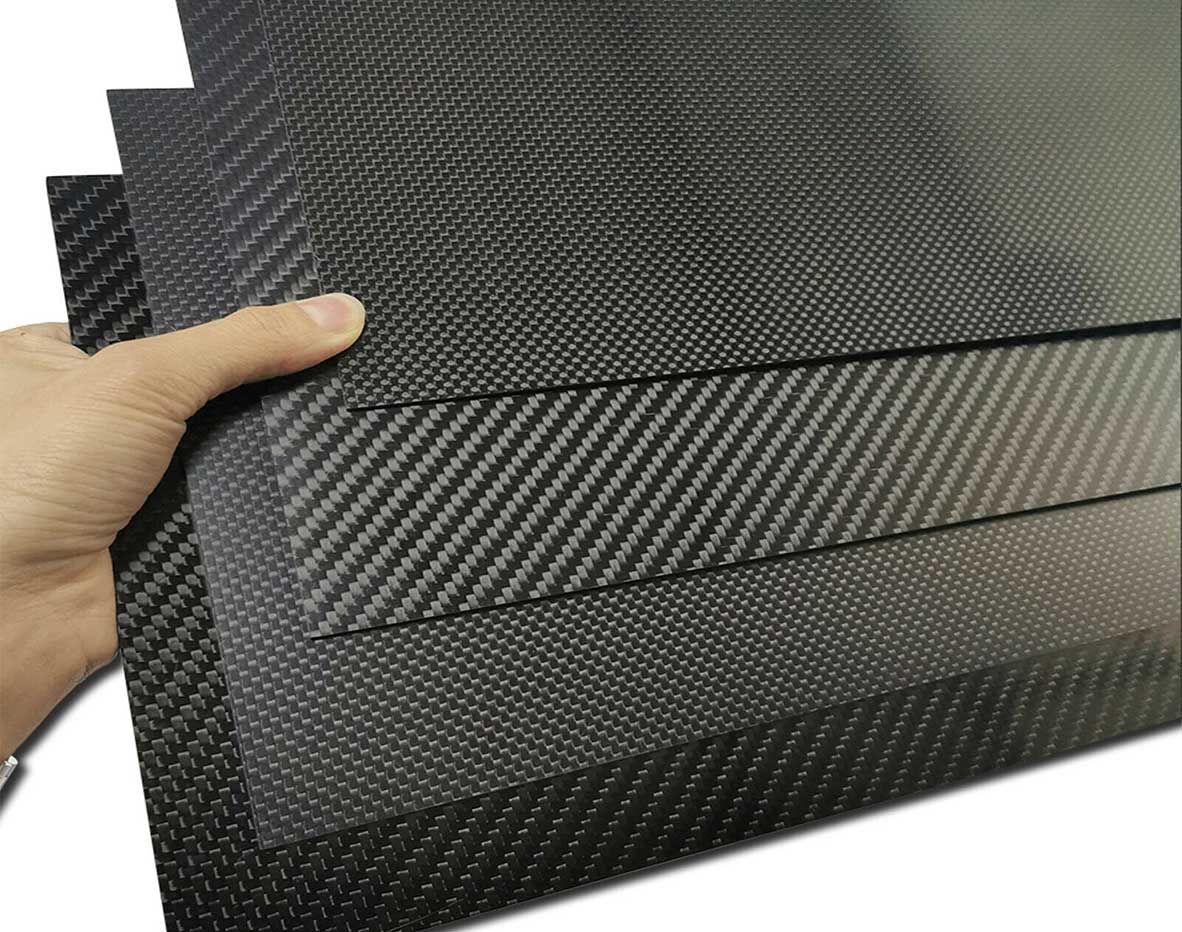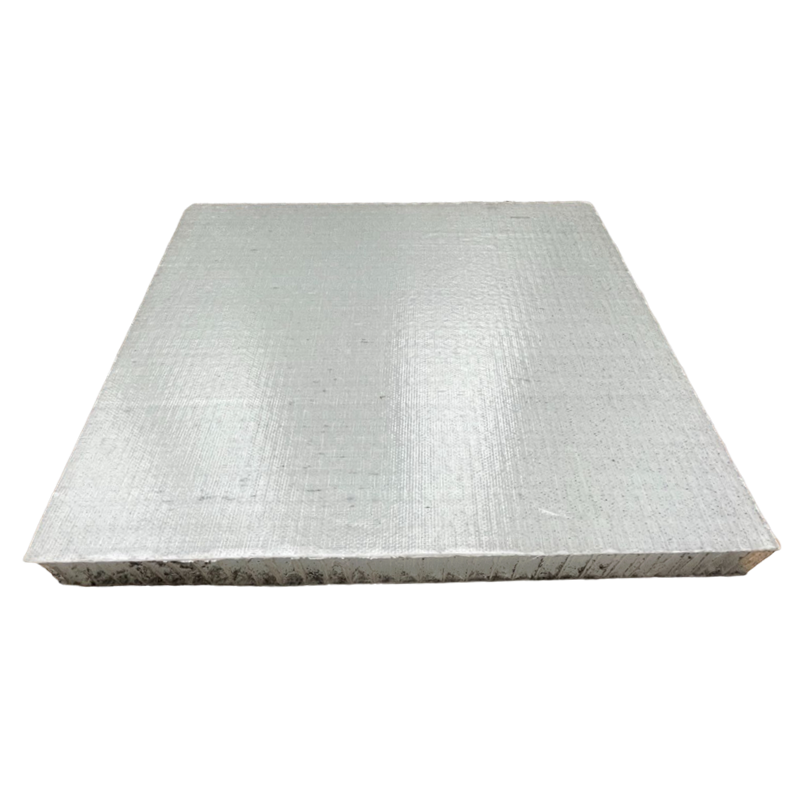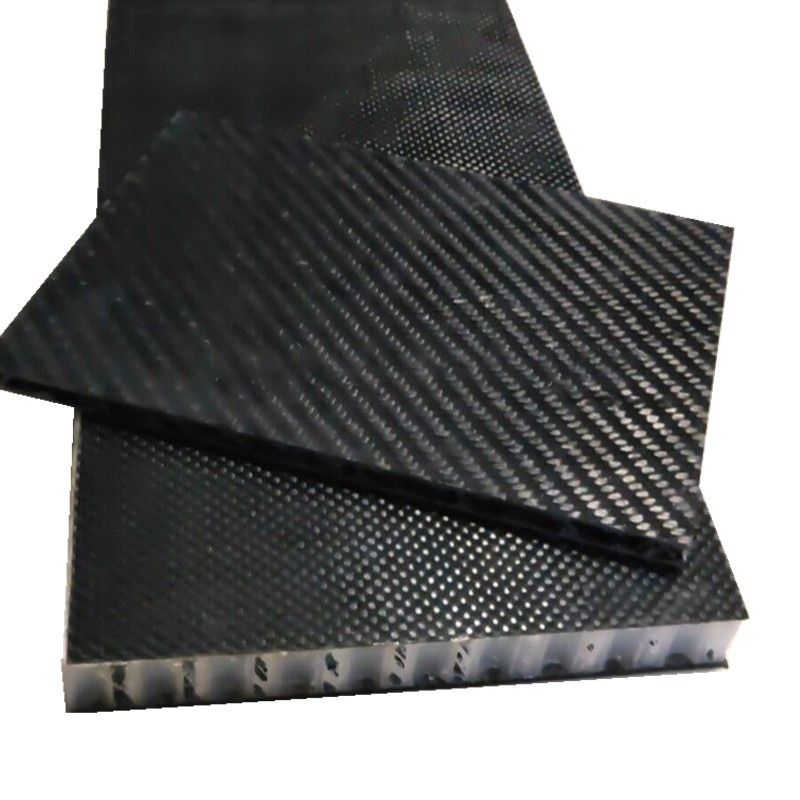Carbon fiber board and glass fiber board are both widely used materials in various industries. While glass fiber board was adopted earlier in China, carbon fiber board outperforms it in terms of overall performance. Carbon fiber materials offer the advantage of being highly lightweight. So, is carbon fiber board superior to glass fiber board in terms of density and weight?
The density of carbon fiber board typically falls within the range of 1.5 to 1.8 g/cm3. Carbon fiber board is composed of carbon fiber composite materials, with the density of carbon fiber itself being approximately 1.75 g/cm3. The commonly used epoxy resin has a density of 1.4 g/cm3, while phenolic resin has a density of 1.10 g/cm3. Considering the distribution ratio of carbon fiber and resin, the overall density of the carbon fiber board is lower than that of carbon fiber alone but higher than that of resin.
Although the density of carbon fiber board is very low, its tensile strength is remarkably high. Carbon fiber can exhibit a tensile strength exceeding 3000 MPa, and the tensile strength of carbon fiber board can reach up to 1500 MPa, surpassing the tensile strength of ordinary steel, which is 600 MPa. Thus, in terms of strength, carbon fiber materials possess a significant advantage. By combining the benefits of light weight and high strength, carbon fiber board has found widespread applications across various industries.
In contrast, the density of fiberglass board ranges from 2.2 to 2.5 g/cm3, higher than that of carbon fiber but lower than that of aluminum (2.7 g/cm3). Glass fiber board is composed of glass fiber composite material, with the density range of glass fiber itself falling between 2.4 and 2.76 g/cm3. When combined with resin, the density of glass fiber board decreases.
Glass fiber board has a slightly higher density than carbon fiber board, but the difference is not significantly pronounced. However, the tensile strength of glass fiber ranges between 1000 and 2000 MPa, which is lower than that of carbon fiber. Overall, the mechanical performance of glass fiber board is considerably inferior to that of carbon fiber board. This fundamental difference is why many enterprises opt to replace glass fiber board with carbon fiber board.
Qingdao Achieving Honeycomb Panel Co., Ltd. is committed to composite various surface materials with superior performance to meet different scenarios of applications. Both of the glass fiber and carbon fiber mentioned above can be composite with honeycomb panels. FRP honeycomb composite material is widely used in boats, tuck bodies, rooftop tent panels, pickleball ball paddles/rackets and other fields. The carbon fiber composite honeycomb sandwich panel inherits the high strength and high stiffness from composite sandwich structure, so it can be used as the main load-bearing structural material in aviation, aerospace, weapons and other fields, and has excellent bending stiffness and torsional stiffness, and has the advantage of high structural stability under large span, Especially suitable for large-span structures with strict weight requirements.
· What is the density of the carbon fiber plate?

The density range of carbon fiber board is around 1.5~1.8g/cm3. Carbon fiber board is made of carbon fiber composite materials, where the density of carbon fiber itself is around 1.75g/cm3, commonly used epoxy resin density is 1.4g/cm3, and phenolic resin density is 1.10g/cm3. Considering the distribution ratio of carbon fiber and resin, the overall density is lower than carbon fiber and higher than resin.
The density of carbon fiber board is very low, but the tensile strength that can be improved is very high. The tensile strength of carbon fiber can exceed 3000MPa, and the tensile strength of carbon fiber board can also reach 1500MPa, while the tensile strength of ordinary steel is 600MPa. Therefore, in terms of strength, carbon fiber materials have a significant advantage. Combining the advantages of light weight and high strength, carbon fiber board has gained more applications in industry.
· What is the density of fiberglass board?

The density of glass fiber board is around 2.2~2.5g/cm3, higher than carbon fiber and lower than metal aluminum (2.7g/cm3). Glass fiber board is made of glass fiber composite material, with the density range of glass fiber itself being 2.4~2.76g/cm3. After combining with resin, the density decreases.
Glass fiber board has a slightly higher density than carbon fiber board, and the difference is not very significant. However, the tensile strength of glass fiber is between 1000~2000MPa, and the tensile strength of glass fiber board is lower. Overall, the mechanical performance of glass fiber board is significantly inferior to that of carbon fiber board. This is also the fundamental reason why many enterprises replace glass fiber board with carbon fiber board.
· Carbon fiber board is lighter than glass fiber board, but cannot be completely replaced
At this point, people may think that carbon fiber board will one day be able to completely replace glass fiber board. This viewpoint may be realized in the future, but it cannot be achieved at present.
The production process of fiberglass board is simpler, with relatively low requirements for equipment and personnel from manufacturers. It can also produce fiberglass composite materials in larger quantities, with a low technical threshold, ensuring the total quantity of fiberglass board. Without pursuing ultimate performance, more enterprises will choose fiberglass board.
In addition, the price of carbon fiber board is several times or even more than ten times that of glass fiber board, and the huge price difference makes many enterprises unwilling to increase production costs, which is the fundamental reason why glass fiber board is still widely used at present. If there is a breakthrough in the process technology of carbon fiber board in the future and there is a huge increase in production capacity, it is possible to achieve the complete replacement of glass fiber board with carbon fiber board.

